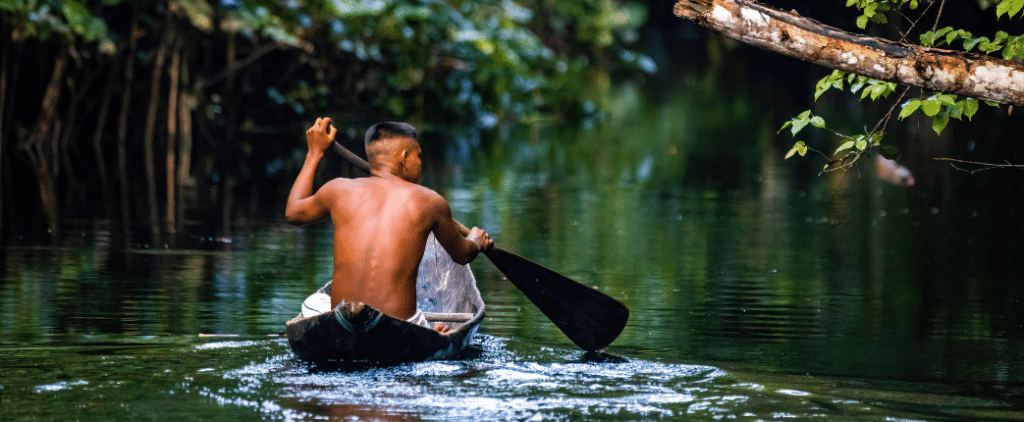
Insights: Modern technology and Indigenous knowledge
Old meets new – how modern technology and Indigenous knowledge are supporting wildlife conservation
Indigenous people have cared for countries around the world for tens of thousands of years. This ancient connection to the land has fostered a deep understanding of sustainable land management practices. Increasingly, environmental managers are recognising the importance of pairing Indigenous knowledge with scientific approaches to wildlife conservation.
In this article, we take a look at how Indigenous knowledge is being used to improve biodiversity conservation outcomes and explore some of the ways First Nations people are embracing modern technology to address environmental challenges.
Why is Indigenous environmental knowledge so important?
In Australia, Aboriginal people are known to have occupied the mainland for at least 65,000 years, while in the United States, Native Americans are thought to have been settled for at least 15,000 years, and possibly as long as 40,000 years.
Over this time, Indigenous people have learned to live in harmony with the land, sustainably managing resources for future generations. Indeed, areas managed by Indigenous communities are often healthier than others.
Despite making up less than 5 per cent of the total global population, Indigenous people manage roughly one-quarter of the Earth’s land surface and about 80 per cent of the world’s biodiversity. In Australia alone, 22 per cent of land is managed by Indigenous people.
Embracing Indigenous land management practices is important for two main reasons:
- Traditional ways of managing the land can complement scientific approaches leading to better outcomes. For example, one of the world’s best fire management programs is led by Indigenous community-based rangers in northern Australia.
- Being connected to the country and caring for the country is fundamental to the spiritual and cultural health of First Nations people.

How is Indigenous knowledge used for wildlife conservation?
Scientists and land managers around the world are increasingly turning to traditional ecological knowledge (TEK) to complement scientific approaches to land management. This knowledge works best when it is implemented through a genuine partnership approach that allows for two-way learning between Indigenous groups and other land managers.
Here are some great examples of Indigenous knowledge being used to manage ecosystems around the world:
- In Northern Australia, Indigenous fire management practices are used extensively to control fuel load and suppress larger fires. These practices involve using low-intensity patchwork burns early in the dry season to reduce fuel load. This creates firebreaks that help to reduce the intensity of late-season blazes.
- Through the Fort Belknap Indian Community Grassland Restoration Project (TEK) is being paired with western scientific approaches to restore the prairie grasslands of north-central Montana. As part of the project, seeds from native grasses are collected from both federal and tribal lands and used to revegetate degraded land.
- In the Amazon’s Rio Negro Basin, a collection of ‘Indigenous Environmental Management Agents’ from various Indigenous groups works together to record detailed environmental observations, which are used to assist with various monitoring and research projects. The data collected ranges from observations of astronomical cycles to measurements of various plant species.

Modern technology is supporting Indigenous land management
Indigenous groups around the world are embracing new technology to achieve even better environmental outcomes. Here are just a few examples:
- The Nyikina Mangala Rangers in the west Kimberley region of Western Australia are using drones fitted with thermal imagining cameras to track the endangered black-footed rock wallaby. Up until 2021, the rangers relied solely on manual tracking methods (such as identifying tracks and scat) to locate the animals and determine the best positions for camera traps. However, in partnership with WWF Australia and Charles Darwin University, they have recently started using drone-mounted thermal imaging cameras to develop a better picture of where the wallabies live. Doing so will help the rangers to design better monitoring programs to protect this endangered species.
- As part of the Healthy Country program in Kakadu National Park, Microsoft and the CSIRO are partnering with Indigenous rangers to develop an AI tool to automatically identify para grass. These highly invasive species are replacing native plants, which removes critical habitat for native animals (such as magpie geese) which live in the wetlands. Rather than traverse challenging wetland terrain, filled with crocodiles, buffalo and feral pigs, rangers can now identify para grass at various stages of its lifecycle by passing drone footage through the custom-built AI program.
The Uru-Eu-Wau-Wau tribe from western Brazil are using drones to track deforestation across their traditional lands in the Amazon. Each year, large swathes of the Amazon are burnt—primarily by people looking to clear areas of forest to make way for agriculture. In partnership with the World Wildlife Fund, the Uru-Eu-Wau-Wau tribe has started using drones to collect high-resolution images, video and GPS data that can be used to identify and report illegal deforestation activities to authorities. The technology not only lets this Indigenous community survey vast areas more quickly and easily than if they had to do it on foot but also helps to protect them from encounters with illegal loggers.
Wildlife Drones recognises the importance of working alongside First Nations people
In order to achieve the UN’s Sustainable Development Goals, it is vital that we embrace the traditional ecological knowledge of Indigenous people around the world.
At Wildlife Drones, we understand the unique role technology can play in supporting Indigenous environmental stewardship. Pairing new environmental monitoring techniques, such as environmental DNA sampling, AI imaging software, and drone-based radio-telemetry, with Indigenous knowledge, has the potential to amplify the positive wildlife conservation outcomes Indigenous managers are already achieving.
Get in touch today if you’d like to hear more about how Wildlife Drones can support your Indigenous organisation to deliver great wildlife conservation outcomes.

